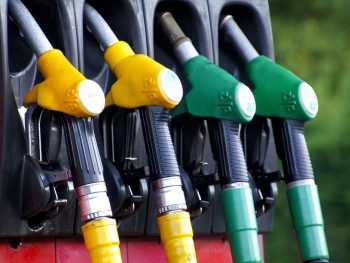Chancellor urged not to hike fuel duty as pump prices rise
The chancellor is being urged to resist any move to end the fuel duty freeze in next month’s Budget as new data shows fuel prices remain on the rise.

Latest RAC data reveals that the price of petrol shot up by 3.5p to 120p a litre in January – marking the third consecutive monthly increase
Amid rumours that fuel duty is to go up in the Budget to pay off the ‘Covid Bill’, latest RAC data reveals that the price of petrol shot up by 3.5p to 120p a litre in January – a price last seen the day before the first Covid-19 lockdown on 22 March 2020 and the third consecutive monthly increase.
Diesel also went up by more than 3p a litre from 120.05p to 123.43p (3.38p), making for the second rise in as many months, although both fuels are still around 7p a litre cheaper than they were a year ago.
The RAC said the increase stems from $5 being added to price of a barrel of oil, although this has been cushioned by the pound strengthening a little against the dollar.
The hike appears to have been led by the supermarkets which hold extreme influence in retail fuel pricing, currently selling 60% of all fuel sold in the UK.
Asda added more than 5p a litre to petrol taking the average price across all its sites to 115.13p. Although its unleaded is still the cheapest available at a supermarket, Sainsbury’s is not far behind at 115.87p a litre. Asda also has the lowest priced diesel at 118.16p, with Sainsbury’s at 118.81p.
As a result of all four of the big supermarkets raising their fuel prices by around 4p a litre, it’s now only 3-3.5p cheaper to buy at their sites compared to the UK average. However, this is a penny less than it was in December when it was 4-4.5p cheaper to buy at a supermarket.
RAC fuel spokesman Simon Williams said: “One thing’s for sure prices are nowhere near the lows we saw in late May when petrol was just under 106p a litre and was diesel 111p. “These latest fuel prices unfortunately show the power of oil production cuts in getting the barrel price back up from the floor at $13.21, when the impact of international travel restrictions first hit last April, to the $55 mark now.
“Eyes will now be on the chancellor who will face a difficult decision at his Budget next month as to whether to pile further misery on drivers by raising fuel duty at a time when pump prices are on this rise and many household incomes are being squeezed as a result of the pandemic.”
The FairFuelUK campaign has spoken out in response to the rumours that fuel duty will rise in the Budget, saying that it “would be a massive political folly to listen to the ill-informed well financed greens to virtue signal a needless hike in fuel duty”.
This includes concerns over a disproportionate impact of any fuel duty rise on those on lower incomes.
Robert Halfon MP said: “Levelling up must mean cutting the cost of living for working people. At a time when those on lower incomes are struggling financially, a fuel duty increase would level down – far from building back better it would damage the foundations of economic recovery.”
Fairfuel UK founder Howard Cox echoed the comments: “A rise in fuel duty would hit the poorest motorists most. Motorists in the poorest 10% of the population (Many in the newly won Red Wall seats) spend proportionately twice as much on fuel as the richer groups. A rise in fuel duty is regressive”
“The way forward out of the huge economic quagmire is to incentivise not punish the very people who are at the heart of any commercial post pandemic recovery. The CEBR have predicted that a rise in fuel duty would generate extraordinarily little revenue, but most certainly would risk jobs, hike inflation, and stagnate business investment with the poorest, catastrophically hit the hardest.”












